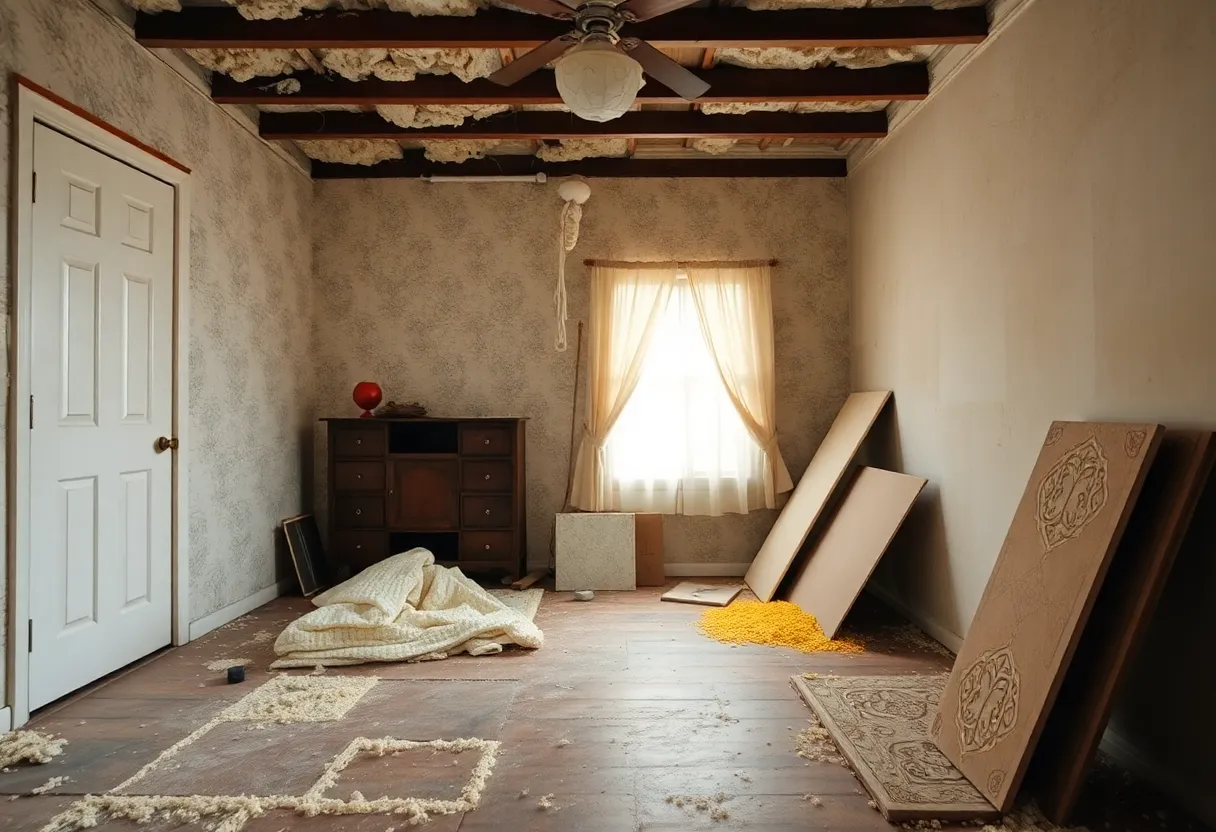News Summary
The report highlights the alarming rise of mesothelioma cases linked to asbestos exposure, particularly among veterans and residents in Illinois. Recent statistics show a decline in annual diagnosis rates, yet the long latency period remains a significant concern. The CDC’s initiative for a national mesothelioma registry aims to centralize patient data, while ongoing legal actions expose critical gaps in asbestos management and safety measures. Communities are urged to maintain vigilance as the threat of mesothelioma persists.
Alarming Rise: The Mesothelioma Crisis and Asbestos Dangers
Every year in the United States, a staggering 2 million people are diagnosed with cancer, of which over 600,000 tragically succumb to the disease. One particularly devastating type of cancer linked to a well-known public health hazard is mesothelioma, a rare and aggressive cancer primarily caused by asbestos exposure. Despite advancements in cancer treatment, the options for those diagnosed with mesothelioma remain severely limited, as the disease itself is often diagnosed too late for effective intervention.
Shocking Statistics: A Closer Look at Mesothelioma Incidences
The incidence of mesothelioma has witnessed a noticeable decline in recent years: in 1990, more than 4,500 individuals were diagnosed with this cancer, resulting in a diagnosis rate of 1.1 per 100,000 people. Today, that number has dramatically dropped, with fewer than 3,000 new cases diagnosed annually, translating to a rate of only 0.6 per 100,000. This decline suggests that awareness of asbestos hazards and regulations surrounding its use have become more prevalent, but the shadow of mesothelioma still looms large.
One alarming aspect of mesothelioma is its long latency period; the disease typically develops 15 to 40 years after exposure to asbestos. This means that many individuals, particularly veterans who may have been exposed during their military service, are at significant risk as they age.
Call for Action: National Mesothelioma Registry
The Centers for Disease Control and Prevention (CDC) has recognized the pressing need for a coordinated response to the mesothelioma crisis and is working towards establishing a national mesothelioma registry. This registry aims to centralize records of newly diagnosed cases, providing valuable resources for patients and their families. However, the lack of concrete steps towards the establishment of this registry has raised concerns, particularly for at-risk populations such as veterans, who make up nearly 30% of annual mesothelioma cases.
Illinois: A State Hard-Hit by Asbestos-Related Diseases
Illinois stands out as a state deeply affected by asbestos-related diseases, reporting 12,067 asbestos-related fatalities from 1999 to 2017, with 2,333 of those deaths attributed to mesothelioma and another 430 due to asbestosis. Cook County alone accounted for approximately 3,863 deaths, underscoring the urgent need for protective measures regarding asbestos exposure.
The presence of asbestos in many public buildings is another risk factor, as it is often safer to leave asbestos undisturbed rather than remove it, which can lead to fiber release and increased danger. As local and state public health policies evolve, they must prioritize optimal care and early identification of mesothelioma cases to ensure timely treatment and improved patient outcomes.
Legal Actions and Community Concerns
Recent legal actions have highlighted the ongoing issues surrounding asbestos management. In early 2023, the Attorney General of Illinois and the City of Chicago filed a lawsuit against MCC Properties LLC and its contractors for allegedly mishandling asbestos during renovations in the Belmont Cragin neighborhood. The lawsuit claims that piles of potentially asbestos-containing debris were discovered during the renovation, raising significant health concerns for both workers and nearby residents.
Additionally, the Rialto Square Theatre in Joliet faced its own legal troubles regarding asbestos air pollution linked to interior renovations. Ongoing litigation has led to the cancellation of several events as safety concerns regarding asbestos contamination continue to plague the venue.
Safety Gaps in Asbestos Management
Illinois currently has varying regulations regarding asbestos removal licensing for private homes, which can create dangerous gaps in safety oversight. Homeowners looking to remove asbestos must ensure that contractors possess the proper licenses and adhere to safety measures during abatement processes. With asbestos classified as a human carcinogen, the risks associated with exposure cannot be underestimated, underscoring the necessity for strict regulatory frameworks and community awareness.
Conclusion: A Call for Vigilance and Awareness
The threat of mesothelioma persists, making public health initiatives and legal accountability even more critical. As discussions around a national registry progress, communities must remain vigilant regarding asbestos management to prevent avoidable exposure. The time to act is now, ensuring that those affected by this dangerous material receive the support and resources they desperately need.
Deeper Dive: News & Info About This Topic
HERE Resources
Understanding the New Challenges for Mesothelioma Patients in Treatment Choices
Johnson & Johnson Ordered to Pay $42 Million Over Mesothelioma Claims
The Alarming Truth About Asbestos Exposure: A Deadly Legacy in the Wake of Wildfires
Presperse’s Bankruptcy Plan Approved Amid Asbestos Claims
Top Cancer Centers Shine in 2025-2026 Rankings
Asbestos Testing Market Set for Explosive Growth Amid Renewed Health Concerns
New Insights Into Mesothelioma: A Hidden Tragedy Linked to Asbestos Exposure
Revolutionizing Mesothelioma Treatment with Immunotherapy
79-Year-Old Appeals for Help After Asbestos Diagnosis
The Shocking Decline of Asbestos Use in the U.S.



















